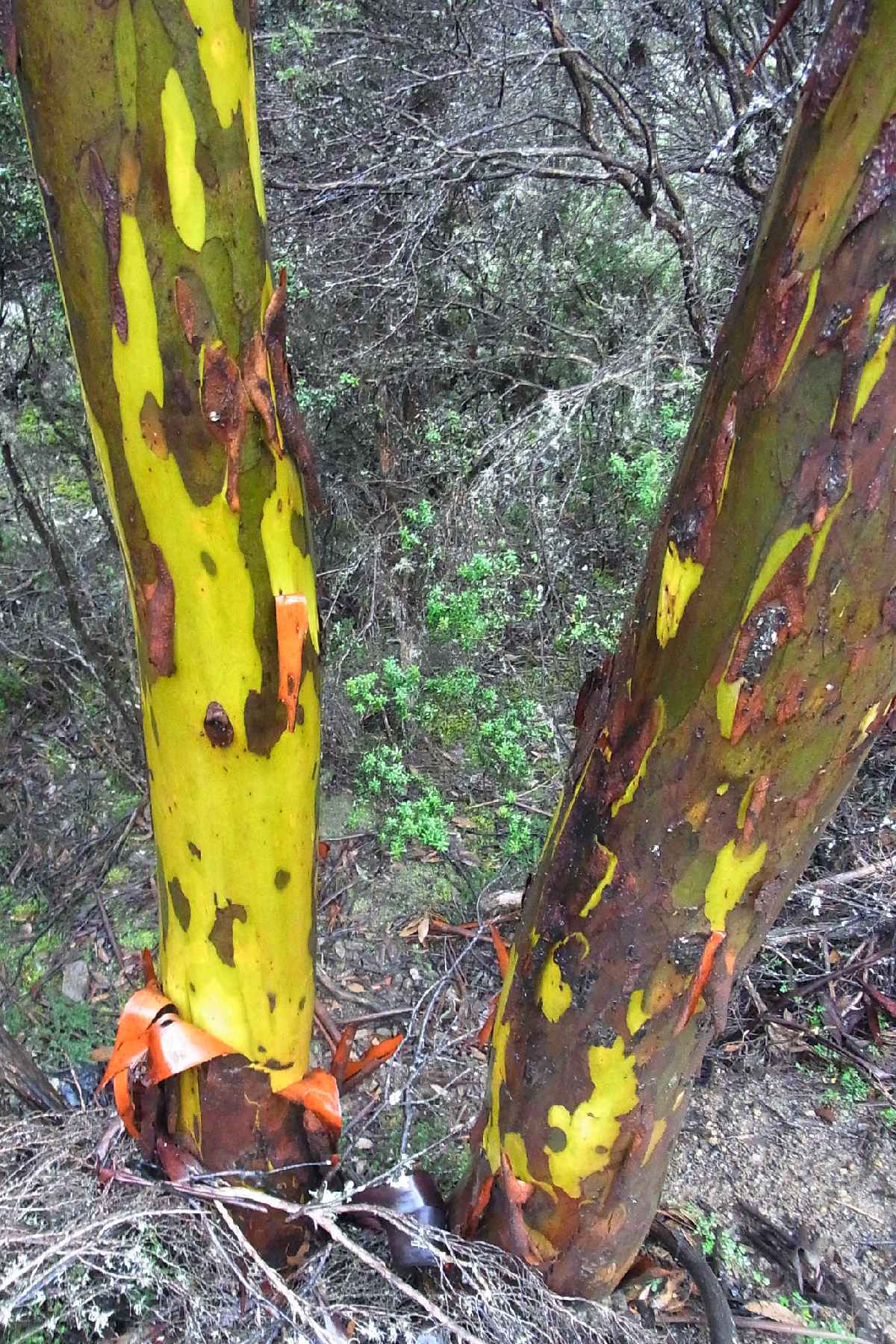Tasmania is full of variety of plants, from colourful flowers to high trees. Discover some of them while bushwalking.
(Milligania densiflora) (endemic to Tasmania) grows at higher altitudes. It grows up to about 15 cm high and has blooms with white flowers that sometimes have a red centre. The plant got it’s name after Joseph Milligan, a 19th century naturalist. It’s name densiflora derives from Latin words densus and floreo, meaning dense or thick and to flower.
(Leptecophylla juniperina) (endemic to Tasmania) is a dense shrub with short prickly leaves. Small white flowers are generally seen in winter and spring. They are followed by edible deep pink fleshy fruits (drupes). More at https://en.wikipedia.org/wiki/Leptecophylla_juniperina
Photo by JJ Harrison CC BY-SA 3.0
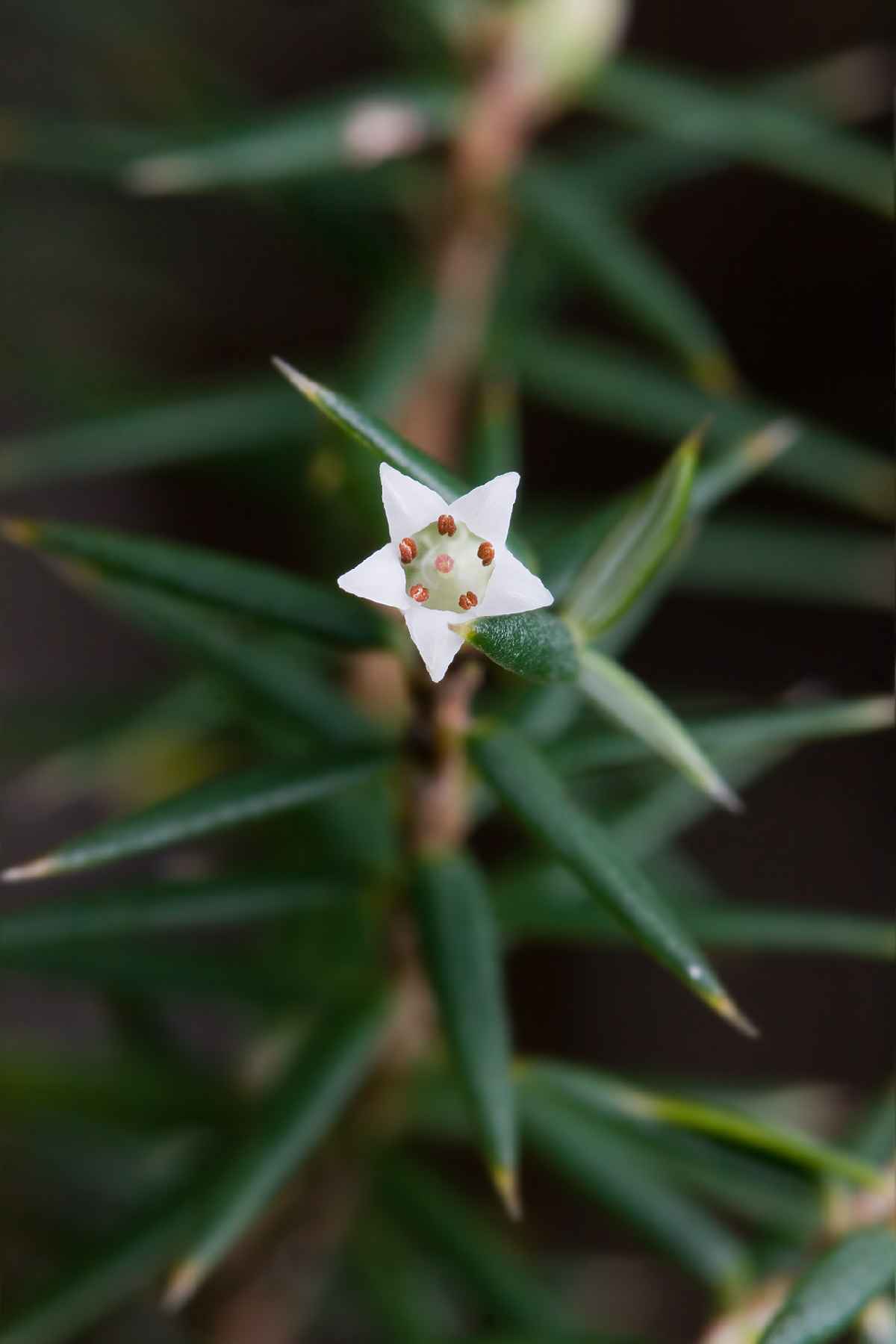
(Boronia Citriodora) (endemic to Tasmania) is a shrub that grows up to 1 m tall. Has lemon scented foliage. White to pink flowers bloom in November to February and are followed by small capsule fruit. More at https://en.wikipedia.org/wiki/Boronia_citriodora
Photo by Murray Fagg, CC BY 3.0 au
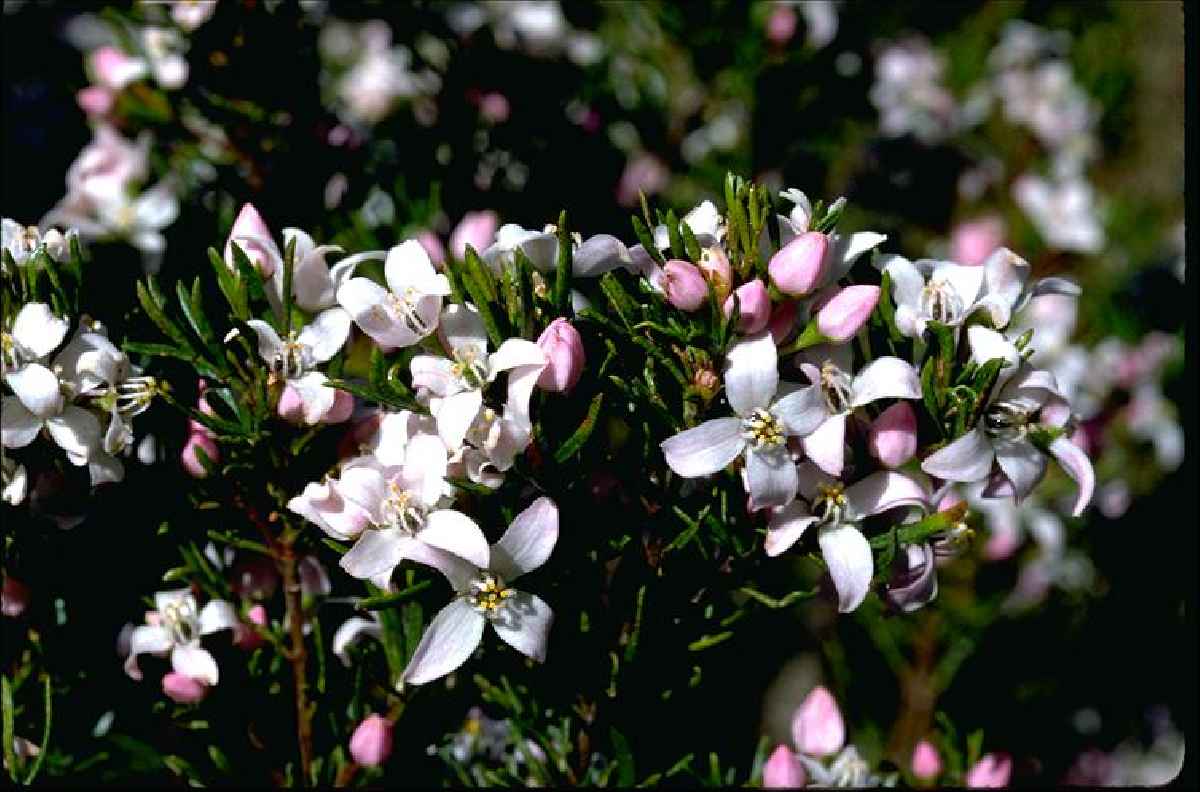
(Chionogentias spp.) (endemic to Tasmania) are small, herbaceous plants with oval to lance-shaped leaves. The large, white or cream flowers are seen in late summer and autumn. Flowers are 5-petalled with thin blue or purple lines.
(Xerochrysum subundulatum) grows in Alpine areas of New South Wales, Victoria and Tasmania. Plants are about 30 cm high and may spread to about a metre in width. The flowers bloom in late spring through to autumn and vary from yellow through to orange. It’s name Xerochrysum subundulatum derives from Greek. Xerochrysum derives from xeros, dry and chrysos, golden. Subundulatum means almost undulate (wavy). More at https://en.wikipedia.org/wiki/Xerochrysum_subundulatum
Photo by Toby Hudson, CC BY-SA 3.0

(Craspedia glabrata) (endemic to Tasmania) is a white daisy that grows on long stems in wet places in the eastern mountains and eastern parts of the Central Plateau.
More at https://en.wikipedia.org/wiki/Craspedia
Photo by AndrewMarkHurley, CC Attribution-Share Alike 4.0 International
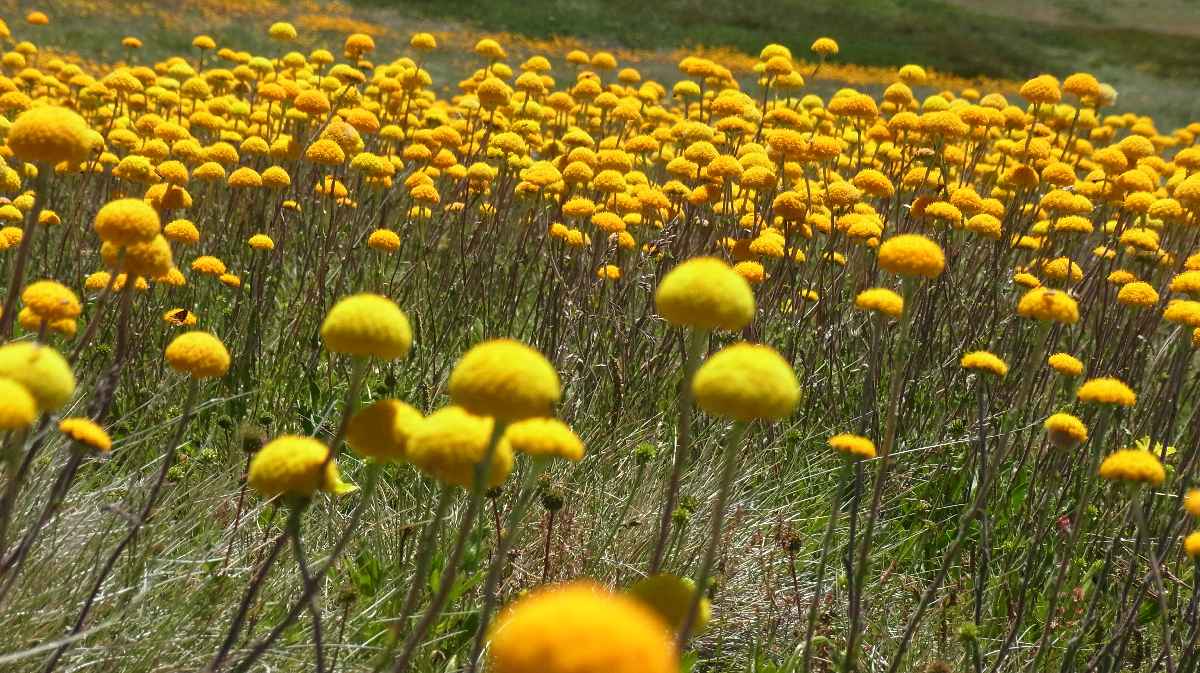
(Helichrysum milliganii) Grows in the western mountains. The flowers bloom as white, papery bracts.
(Hibbertia procumbens) is a shrub with about 30 cm long branches. Flowers bloom from Oct. to Dec with yellow flowers. More at https://vicflora.rbg.vic.gov.au/flora/taxon/180f8bb2-66fb-40f2-af03-5257e5448ac4
Photo by John Tann
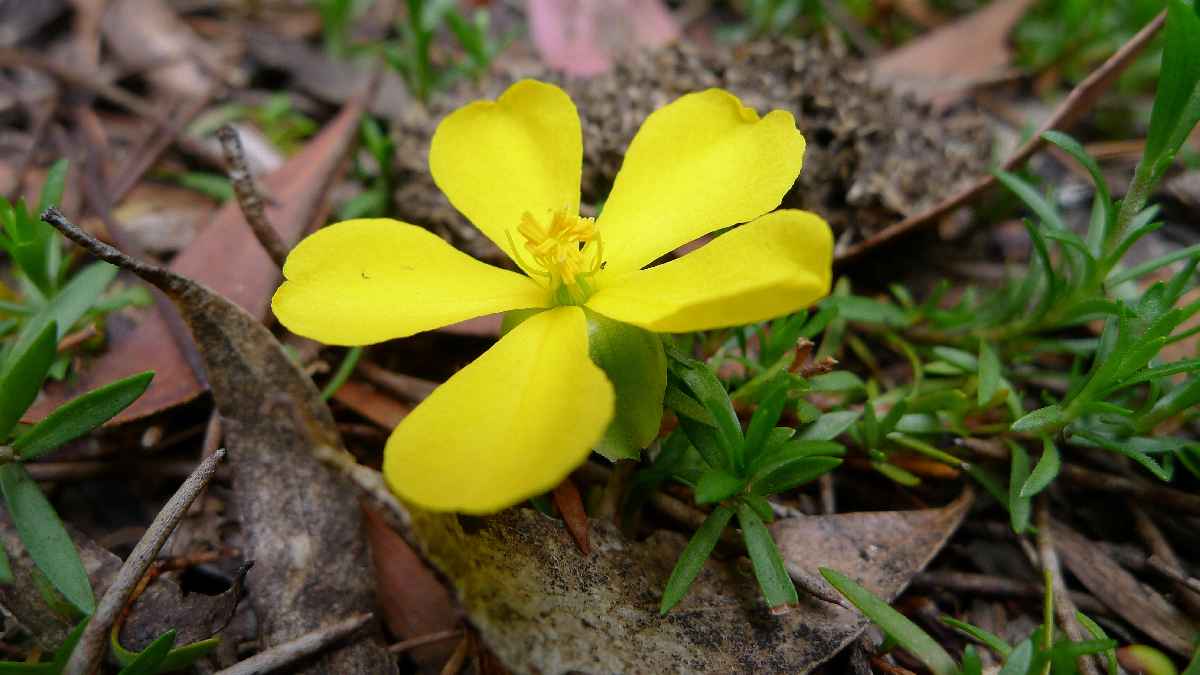
(Bauera rubioides) aka Dog Rose, Wiry Scrub, Rose Heath or River Rose is a scrambling to upright growing shrub that grows from 0.5 to 1.5 metres long. The flowers bloom from pure white through delicate pinks to purple and shaded colours. More at https://en.wikipedia.org/wiki/Bauera_rubioides
Photo by Krzysztof Ziarnek, Kenraiz, CC Attribution-Share Alike 4.0 International
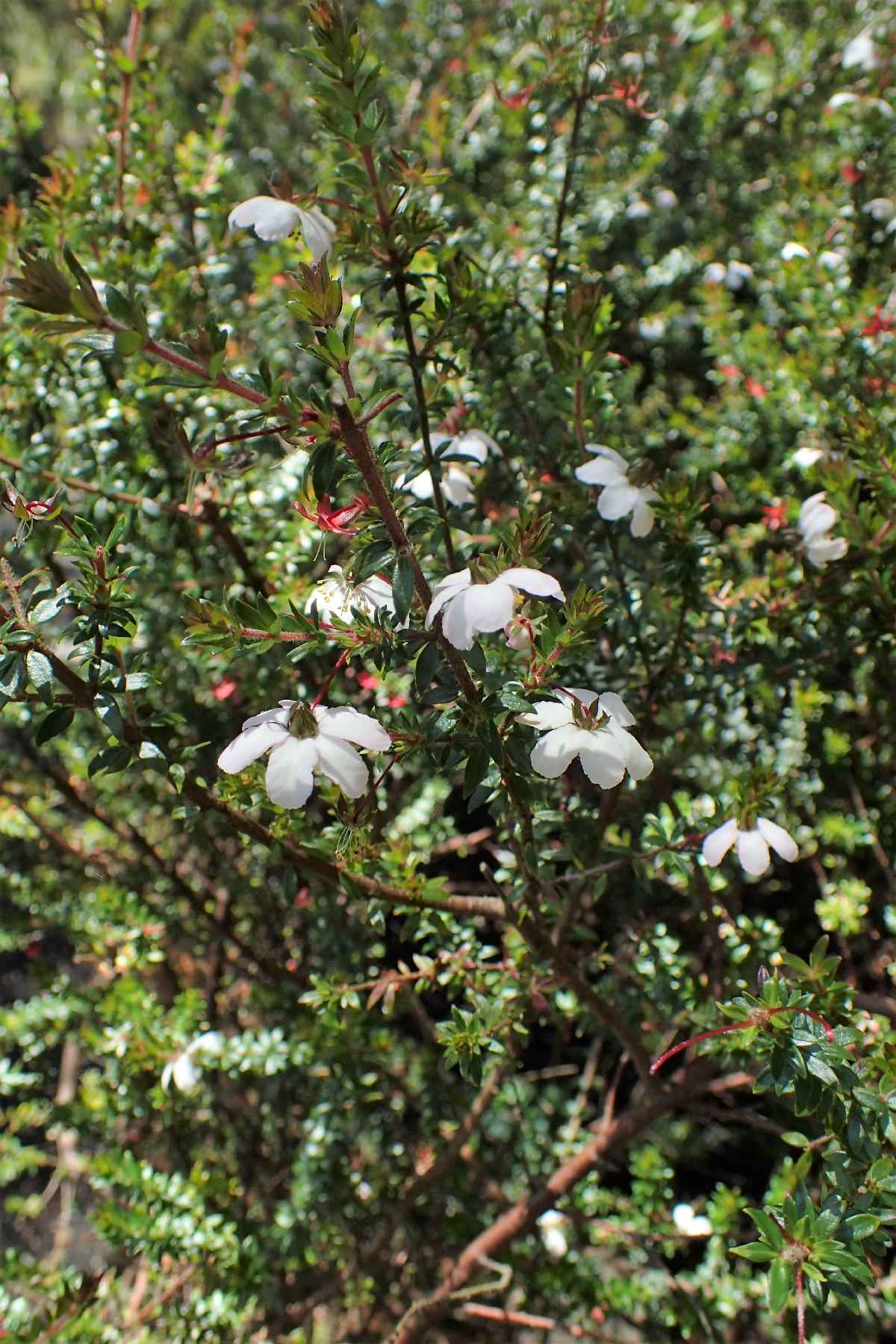
(Cyathodes glauca) (endemic to Tasmania) is a common shrub or small tree. Flowering occurs around New Year, followed by conspicuous red fruit. The fruit is considered edible, but not particularly palatable.
Photo by Poyt448 Peter Woodard, CC Attribution-Share Alike 3.0 Unported
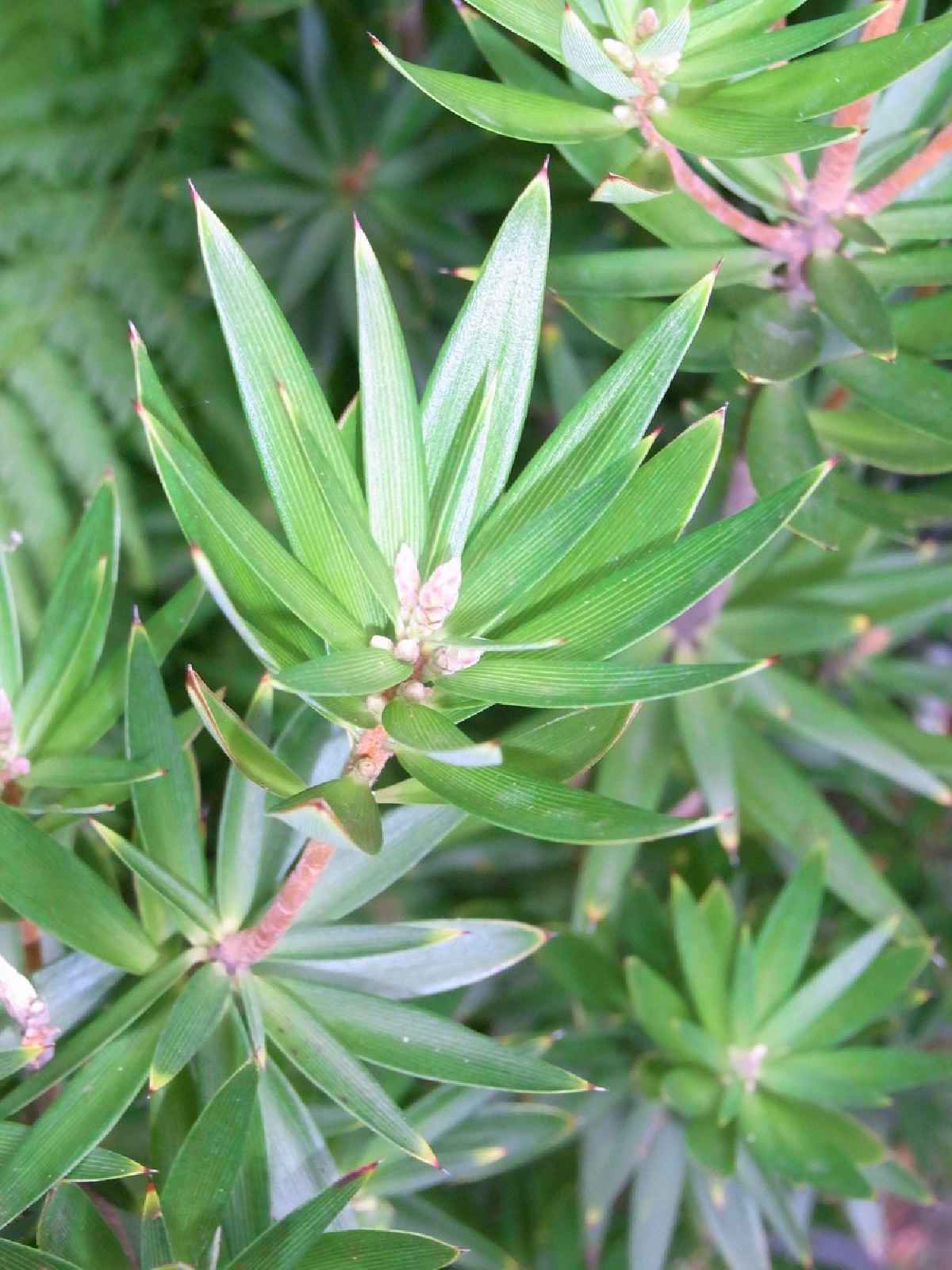
(Richea Scoparia) (endemic to Tasmania) grows just above the tree line. Branhes are full of sharp pointed leaves. The plant is spiny to touch and can make impenetrable thickets. The flowers bloom in spring in red or occasionally pink or creamy colour.
Photo by JJ Harrison, CC Attribution-Share Alike 3.0 Unported

(Euphrasia collina) is a shrub 5 and 60 cm tall. The flowers bloom in the first half of summer in white, blue, pink or purple, sometimes blotched with yellow on the lower petal. More at https://en.wikipedia.org/wiki/Euphrasia_collina
Photo by Melburnian, CC BY 3.0
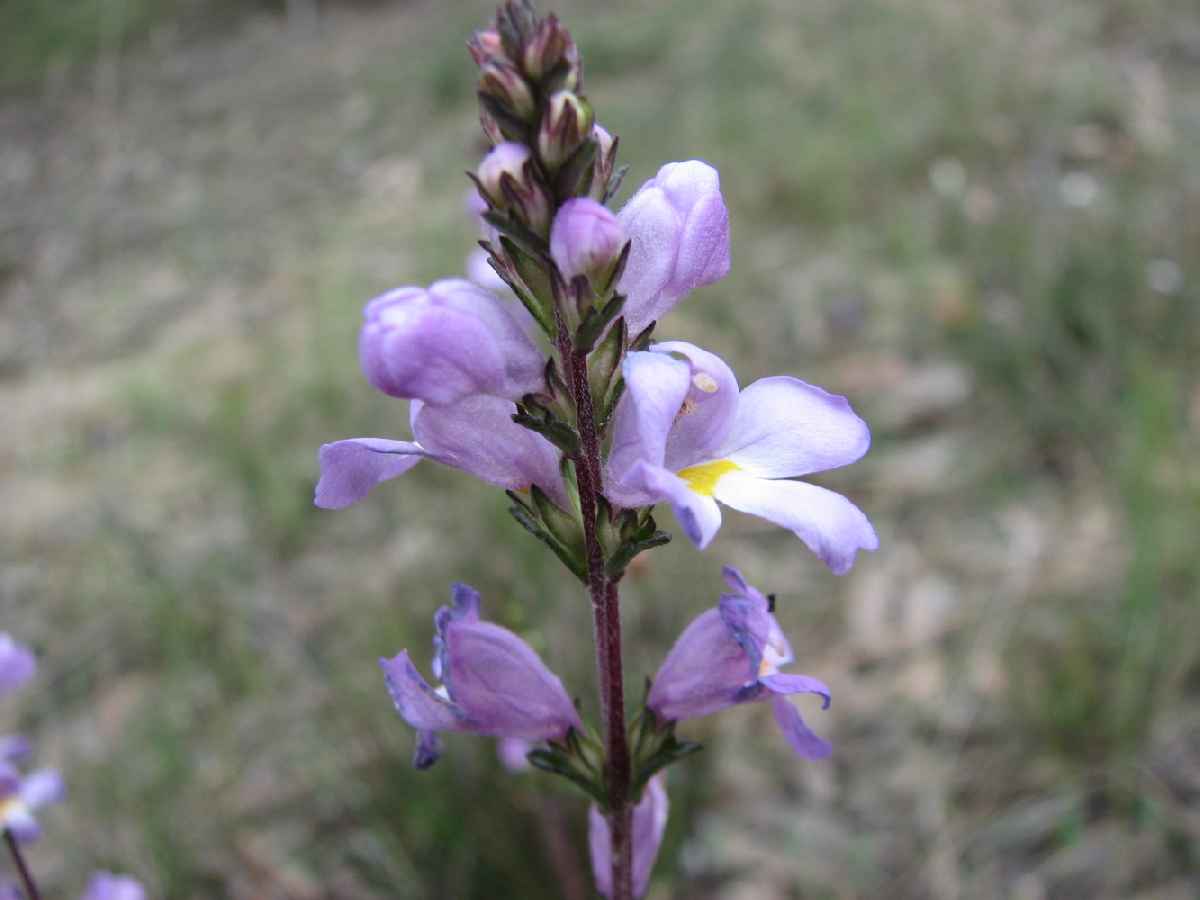
(Utricularia dichotoma) is a low herb with leaves variable in size and shape. It’s name derives from Latin for "dividing into pairs" and refers to the double arrangement of flowers which this species often displays. The flowers bloom in spring and fall as small pink tops, yellow crest and wide purple skirts. More at https://en.wikipedia.org/wiki/Utricularia_dichotoma
Photo by JoJan
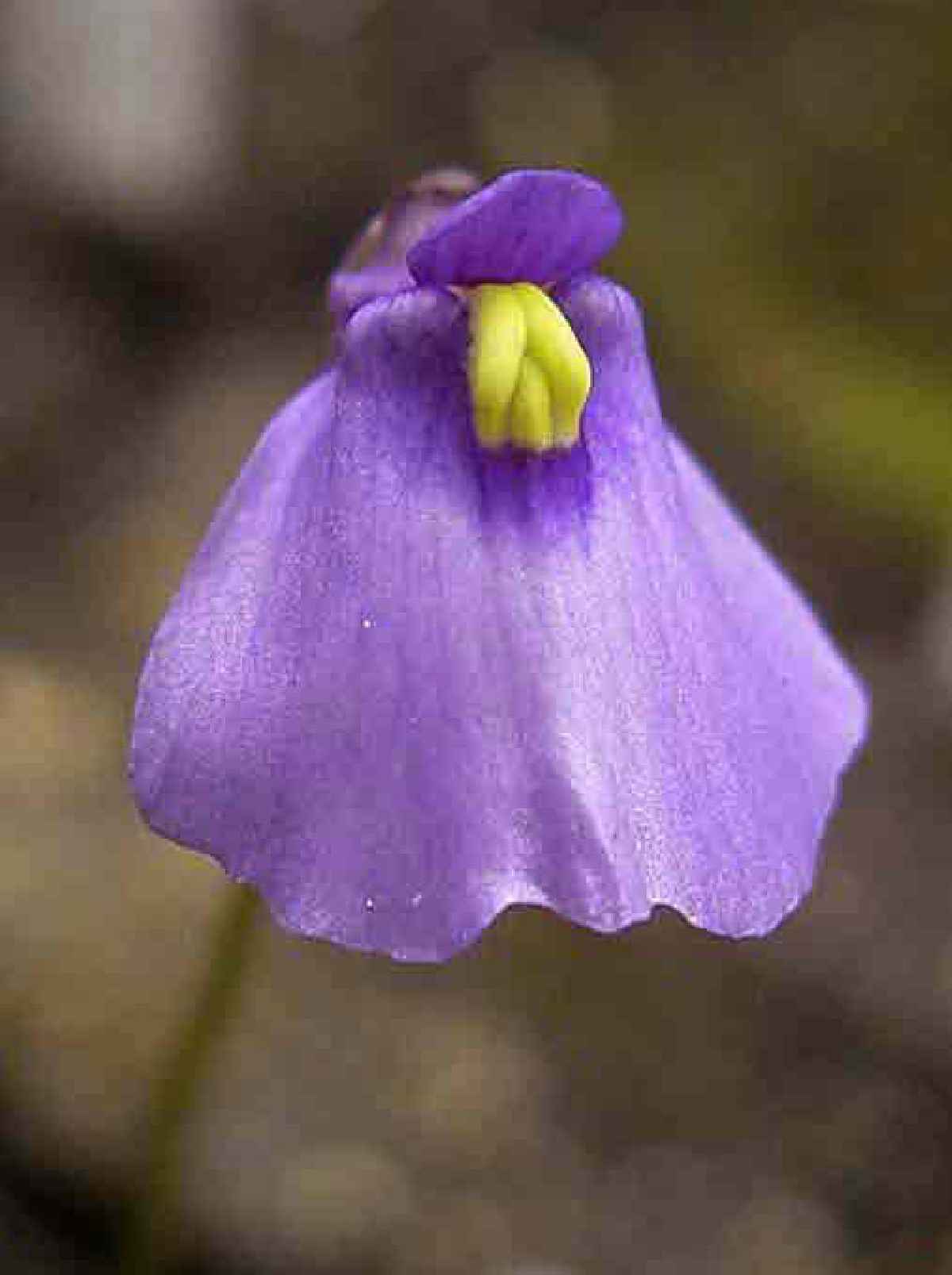
(Richea pandanifolia) or Giant grass tree (endemic to Tasmania) is a distinctive endemic Tasmanian flowering plant which grows from 2 to 12 metres tall. It has strap-like leaves that can grow up to 1 metre long. Groups of flowers grow on up to 25 cm long panicles (branched inflorescence). Flowers bloom in either white of deep pink in colour.
More at https://en.wikipedia.org/wiki/Richea_pandanifolia
Photo by brewbooks
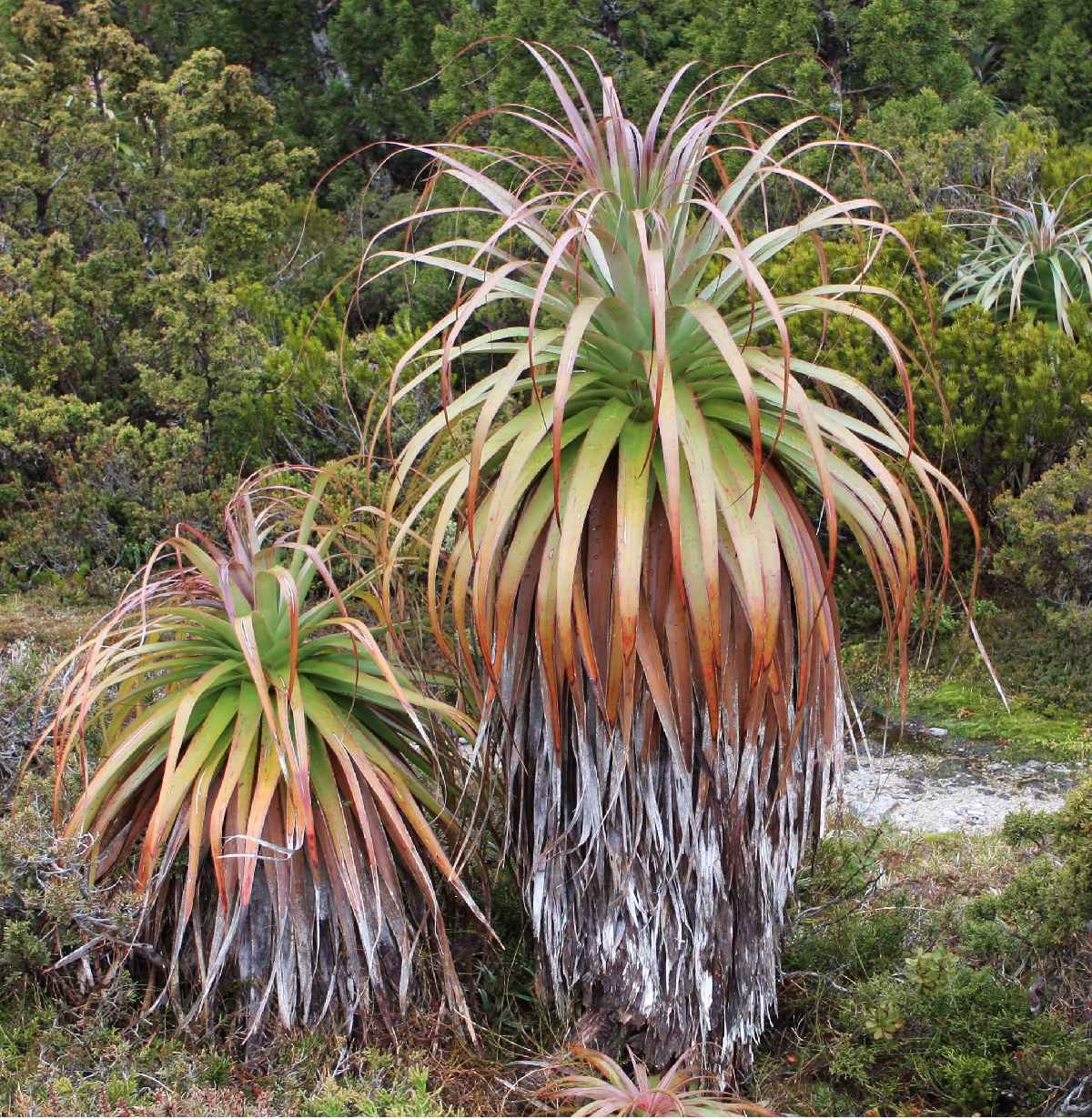
(Abrotanella forsteroides) (endemic to Tasmania) are low growing, highly compact, woody, spreading mats that can grow up to 3 m in diameter. Flowers bloom as tiny white daisies held just above the leaves. More at https://en.wikipedia.org/wiki/Tasmanian_cushion_plants
Photo by brewbooks
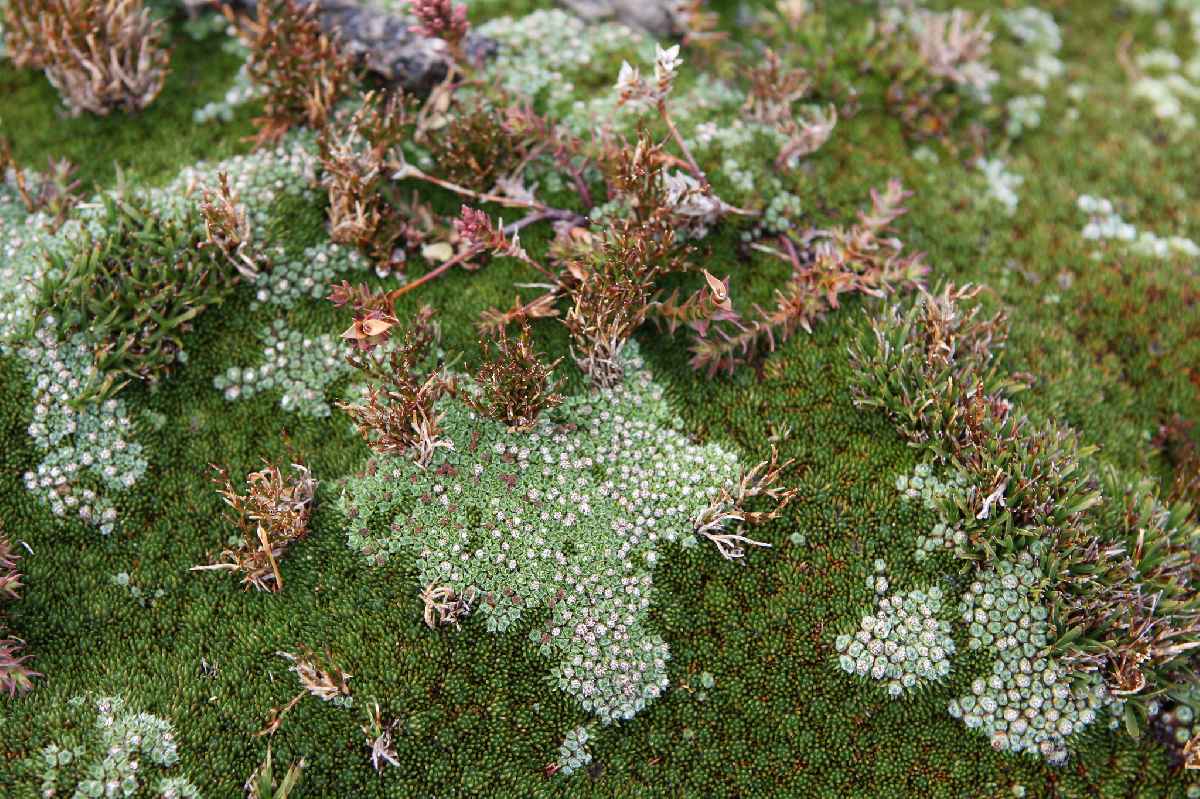
(Athrotaxis selaginoides) (endemic to Tasmania) is an evergreen tree that grows in the mountains. It grows up to 20–30 metres tall and has claw-like leaves and cones. Despite it’s name it is not a true pine. More at https://en.wikipedia.org/wiki/Athrotaxis_selaginoides
Photo by James
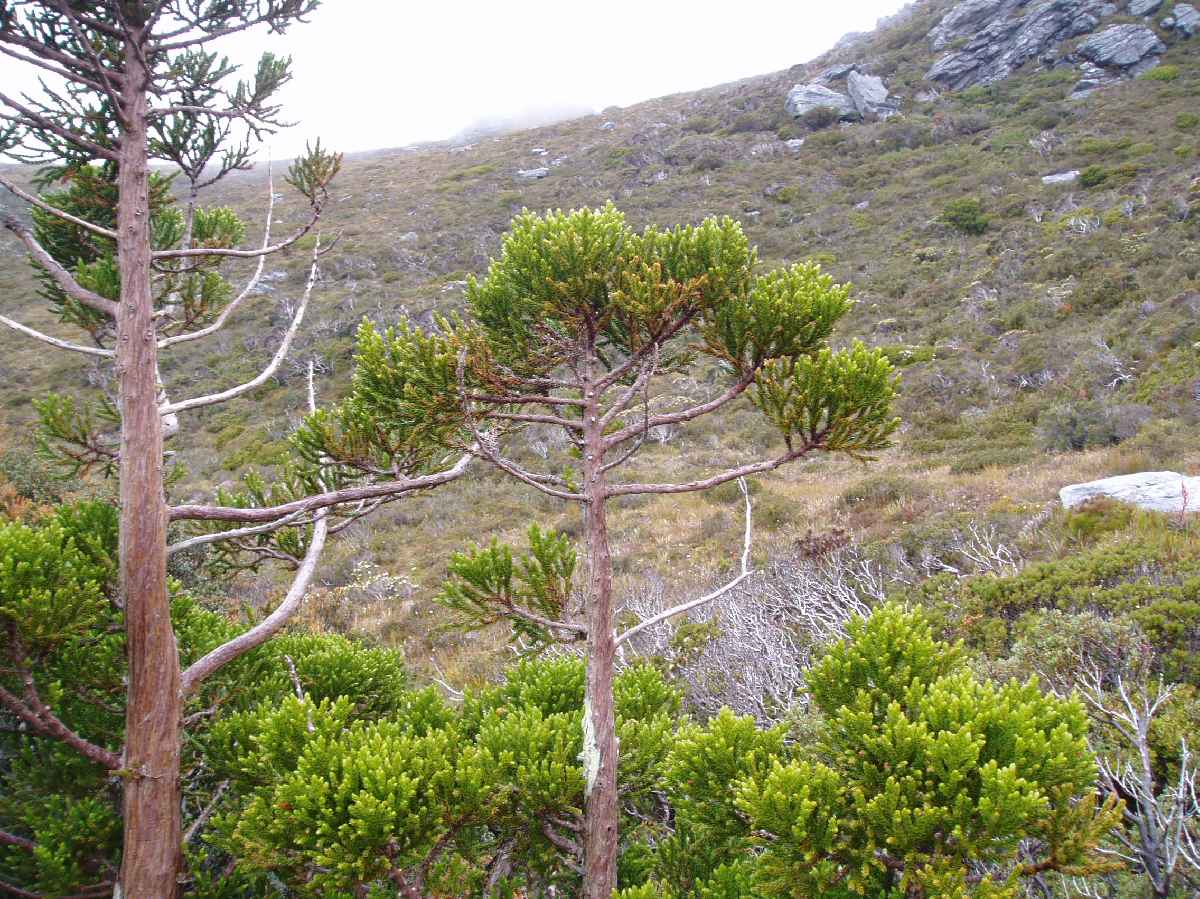
(Athrotaxis cupressoides) (endemic to Tasmania) is not actually a member of the pine family. It’s a conical-shaped Cupressaceae tree which grows up to 20m. The name Athrotaxis derives from Greek words athros, as crowded and taxis, as arrangement. The species name cupressoides in Greek means ‘resembling cypress’. More at https://en.wikipedia.org/wiki/Athrotaxis_cupressoides
Photo by Mike Bayly, CC BY-SA 2.5
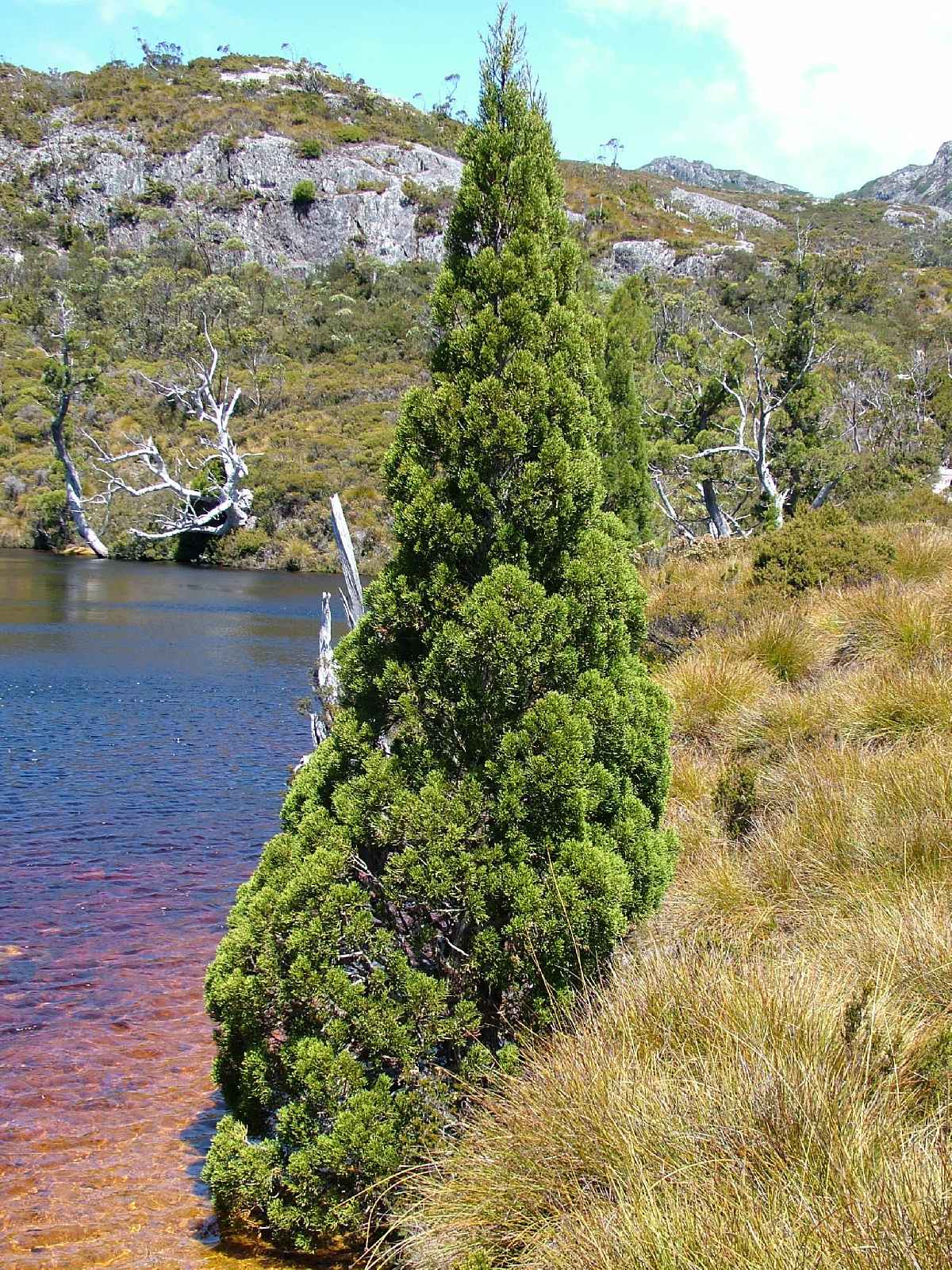
(Phyllocladus aspleniifolius) (endemic to Tasmania) mostly grows in in the western highlands. Its ‘leaves’ appear similar to those of a celery plant, hence the common name. Mature cones are a distinct fleshy pink to red with white aril. More at https://en.wikipedia.org/wiki/Phyllocladus_aspleniifolius
Photo by Daderot, CC CC0 1.0 Universal Public Domain Dedication
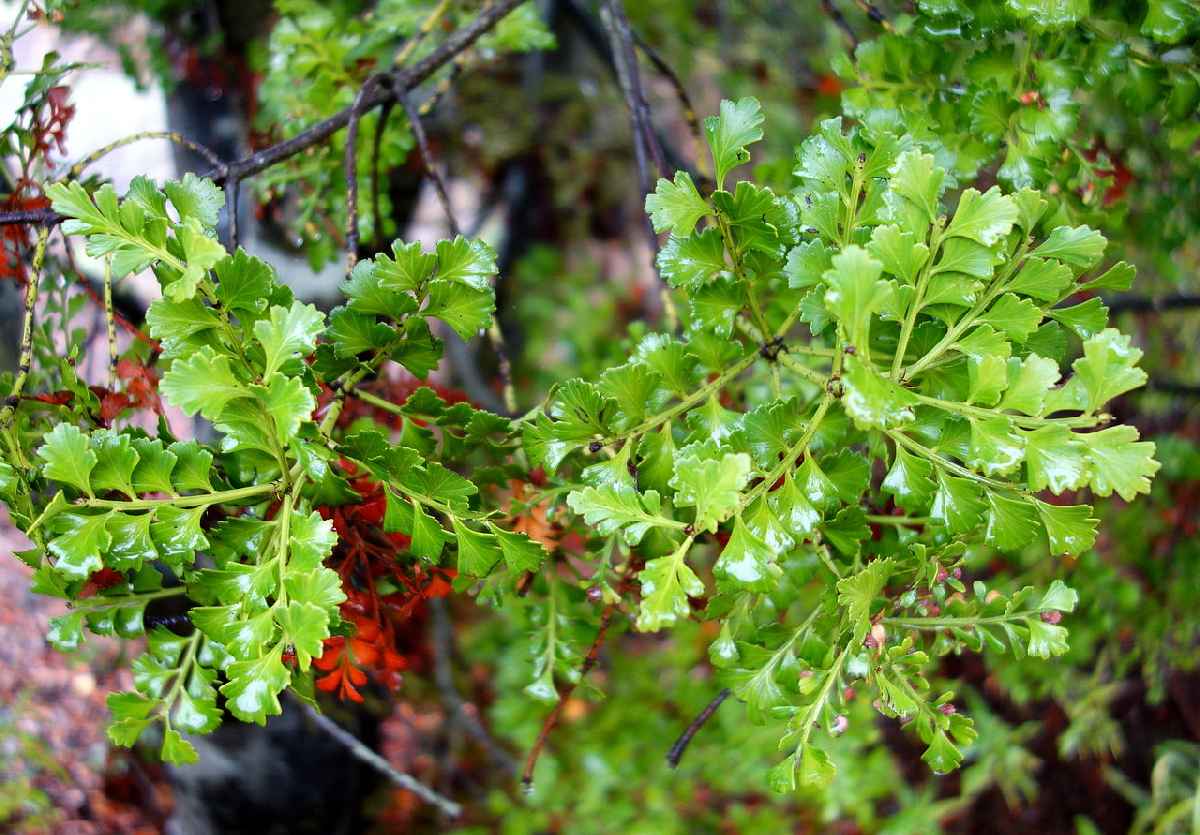
(Nothofagus gunnii) or tanglefoot Beech or fagus (endemic to Tasmania) is a shrub that is endemic to Tasmanian highlands. It’s a small woody tree with a shrubby appearance known to grow up to 3 metres. It is the only native deciduous tree in Tasmania, and the only cold climate winter-deciduous tree in Australia.
More at https://en.wikipedia.org/wiki/Nothofagus_gunnii
Photo by Will Hore-Lacy, CC Attribution-Share Alike 4.0 International
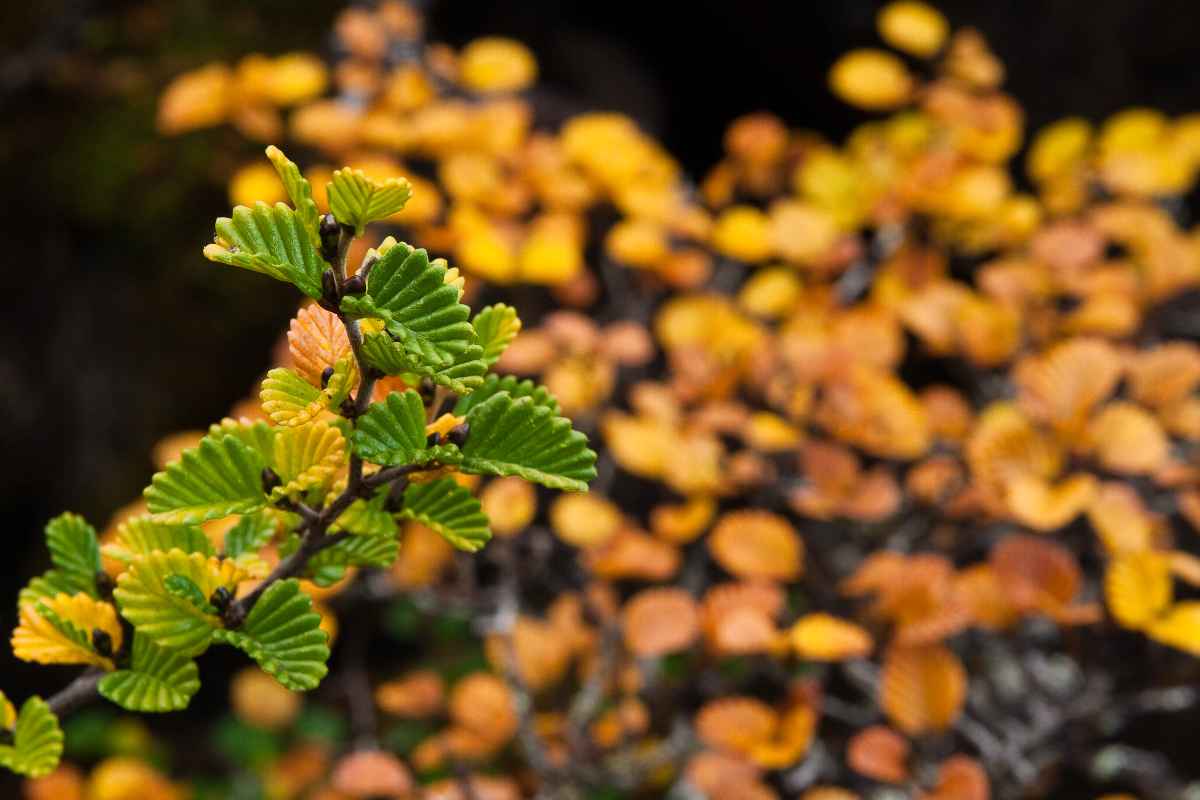
(Eucryphia lucida) (endemic to Tasmania) is a shrub or tree that is endemic to western Tasmania. It grows up to 2–10 metres tall.It blooms in spring and summer with white flowers that have four petals and resemble small single roses. Flowers are followed by leathery capsules in autumn. More at https://en.wikipedia.org/wiki/Eucryphia_lucida
Photo by Doug Beckers, CC BY-SA 2.0
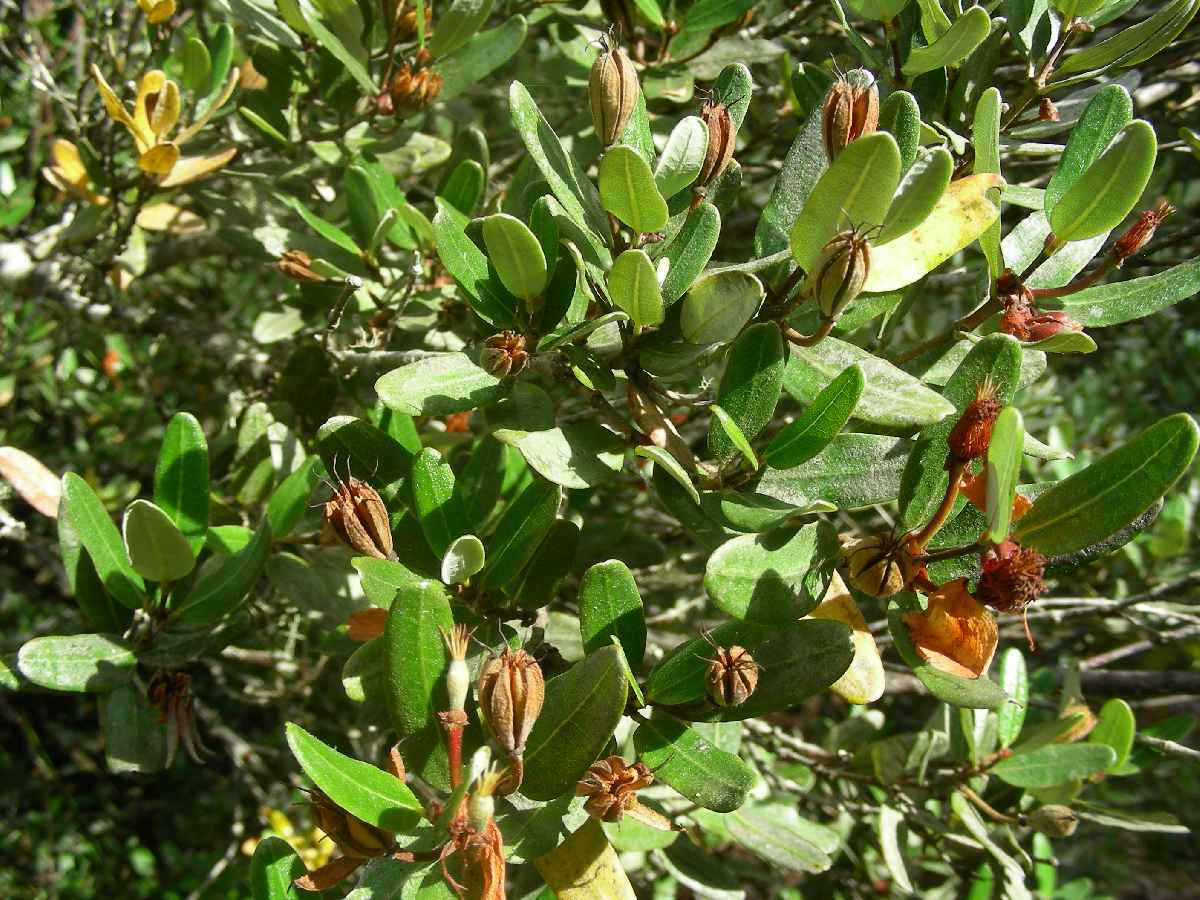
(Eucalyptus subcrenulata) (endemic to Tasmania) is a tree endemic to eastern Australia. It grows up to 20 metres high.
Photo by Rotuli
